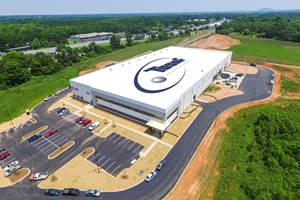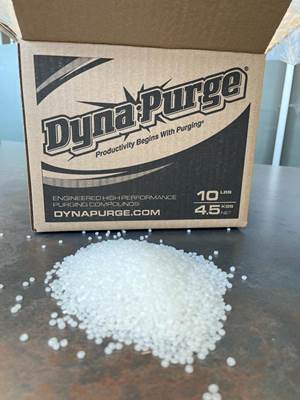Imagineers: Brainstorming About Plastics in Cars
Five years down the road, your automobile might feature snap-on body panels with molded-in color that hang on a frame of glass-reinforced polyurethane.
Five years down the road, your automobile might feature snap-on body panels with molded-in color that hang on a frame of glass-reinforced polyurethane. Sounds far-fetched? How about a one-piece blow molded car floor? Or a chassis made of extruded and injection molded members covered with textured body panels?
These are just some of the ideas for leading-edge “concept cars” dreamed up by the 16 design-engineering students who graduated last spring from a 16-week program at the Center for Creative Studies at the College of Art and Design (CCS) in Detroit. CCS educates nearly 65% of the automotive designers in North America. The students were charged with generating fresh approaches to using plastics in car designs for an intended market five years ahead. The program was cosponsored by the American Plastics Council (APC), Arlington, Va., and the Automotive Div. of the Society of Plastics Engineers (SPE), Brookfield, Conn.
“The genesis of this project began with the reality that most plastic producers work with the automotive engineering designer, or the OEM, or with the Tier One automotive supplier, but rarely do they work with the automotive stylists,” says Bruce Cundiff, automotive director at APC. As a result, he says, the automotive industry often doesn’t consider polymers on an equal footing with other materials such as metal or glass for designing new cars.
Unfettered by knowledge
The students’ imaginations were not hampered by in-depth knowledge of the capabilities or limitations of plastics materials or production processes. For them, using plastics removed some of the design constraints that apply to metals or glass, says Carl Olsen, Transportation Design section chairman at CCS.
Student Jeff R. Cotner from O’Fallon, Mo., envisioned the snap-fit body panels as a means of rapid assembly that would eliminate welding and other joining techniques, according to Olsen. The snap-fit approach was intended for fenders, hoods, door panels, and trunk lids—not for areas considered structural.
Student Bryan S. Thompson from Phoenix, Ariz., imagined a car with snap-fit panels and a blow-molded floor. Why blow molding? Olsen says that with a double skin you get insulation properties. Blow molding also allows for the formation of parts with eccentric shapes, something very difficult with metal stamping. In addition, molding a hollow part potentially combines stiffness with light weight, and thermoplastic molding gives designers a chance to integrate the other interior parts like the seat mounts and floor rests into one part. The part can hang on a space frame of steel or aluminum.
Student Vladimir S. Kapitonov from Chelyabinsk, Russia, looked at molded body panels with textures. Olsen says this approach uses plastics in a decorative way. The benefit of a pattern or texture is that it can disguise flow lines in self-colored thermoplastics. The texture is added by the mold and is a value-added benefit over metal. These parts are imagined as candidates for closure panels, such as the hood and trunk lid.
Another interesting concept comes from student Christopher A. Hillman of Windam, Me., who thought about parts of two different colors for the car’s side moldings. Olsen says combining matte and shiny surfaces may lead to new and exciting ways to create accents for a car at modest cost.
Matt J. Srugis of Royal Oak, Mich., came up with the novel idea of front and rear fenders and rockers that are one piece of polypropylene reinforced with steel mesh. Srugis also incorporated an idea that is already on the way to reality: polycarbonate windows.
Related Content
Tosaf’s Investments in North America Result in 40% Increase in Production Capacity
Backed by a global presence, Tosaf provides localized additive and color solutions, and services for the plastic industry in North America.
Read MoreUpdated Controller for Sealed Gravimetric Liquid Color and Additives System
NPE2024: Riverdale Global’s new RGS controller features and intuitive set-up procedure.
Read MoreTechmer Buys Advanced Color Technologies
Deal will expand Techmer’s in colorants and additives in synthetic fibers.
Read More'Dual Action' Purging Compound Accelerates Color Changes
NPE2024: Shuman Plastics’ Dyna-Purge Division launches Dyna-Purge L, extending its “3X technology.”
Read MoreRead Next
People 4.0 – How to Get Buy-In from Your Staff for Industry 4.0 Systems
Implementing a production monitoring system as the foundation of a ‘smart factory’ is about integrating people with new technology as much as it is about integrating machines and computers. Here are tips from a company that has gone through the process.
Read MoreSee Recyclers Close the Loop on Trade Show Production Scrap at NPE2024
A collaboration between show organizer PLASTICS, recycler CPR and size reduction experts WEIMA and Conair recovered and recycled all production scrap at NPE2024.
Read More









